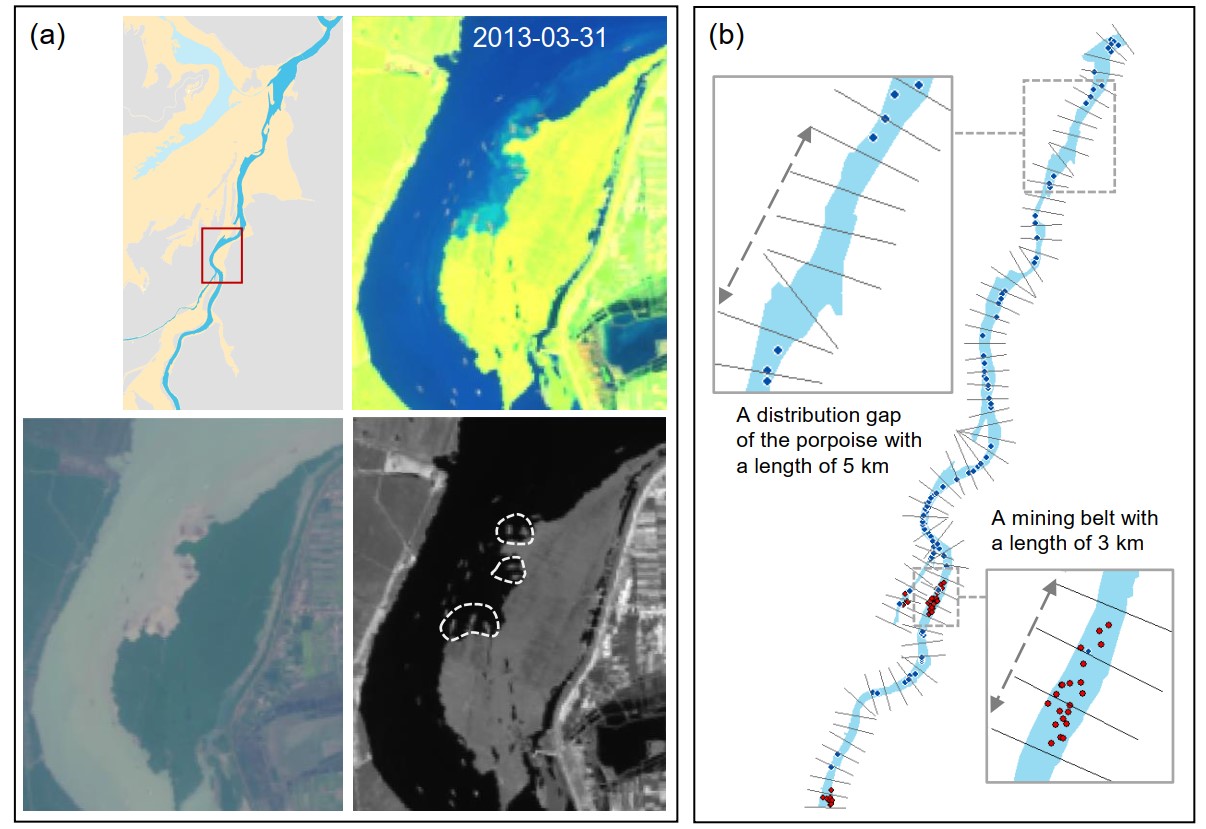Highlights
Ecological Impacts of Unsustainable Sand Mining: Urgent Lessons Learned from Critically Endangered Freshwater Cetacean
Through direct physical disturbances, habitat degradation, and reducing water quality by altering sedimentation, sand mining threatens biodiversity and interferes with ecological processes. With the rapid process of urbanization, the demand for sand is predicted to continue increasing, with the strongest growth in Asia, Africa, and Latin America. Some of these waters are also among the world’s most biodiverse and threatened ecosystems. Mitigating impacts and reconciling conflicts between conservation and development require a better understanding of the scales and pathways of mining threats.
Despite potentially profound consequences, the ecological impacts of sand mining in freshwater ecosystems have not been systematically studied. Because sand mining is largely unregulated and unreported, researchers generally lack access to data on mining locations and extraction rates, hindering linkages between mining intensities and their impacts. By providing long-term and large-scale perspectives on mining threats, remote sensing technologies can overcome many of the limitations of data scarcity and site-based monitoring.
Recently, a research group led by Prof. WANG Ding from the Institute of Hydrobiology (IHB) of the Chinese Academy of Sciences presented the first case study using remote sensing to continuously monitor mining activities and, thereby, evaluated their ecological impacts on the distribution of a Yangtze finless porpoise (Neophocaena asiaeorientalis asiaeorientalis) over fourteen years (2006-2019) in China’s second largest freshwater lake, Dongting Lake. This study was published in Proceedings of the Royal Society B: Biological Sciences.
In this study, the researchers identified sand dredgers using 128 cloud-free Landsat images acquired between 1 January 2006 and 31 December 2019, and summarized sand-mining activities to reflect the mining extent and intensity. The results showed that sand mining presented a consistent, widespread disturbance in Dongting Lake. From 2007, sand mining increased in both extent and intensity, followed by an intense mining period between 2008 and 2016, when the mining intensity maintained high and mining sites occurred in 40–70% of the entire study region.
Based on investigating whether sand mining could cause displacement and movement restrictions of the porpoise using data of five porpoise surveys from 2009 to 2015 when mining activities were widespread, the researchers found that the extensive sand mining significantly contracted the porpoise’s range and restricted their habitat use in the lake. The porpoise distributions were discontinuous and large distribution gaps were observed during the intense mining period (2008–2016). All porpoise distribution gaps longer than six km were subjected to sand mining. In particular, the distribution gaps spread up to ~27 km in 2009 and ~20 km in 2011.
By monitoring the effects of water traffic of sand transportation on the porpoise river-lake movement in the lake’s outlet channel, the result showed that water traffic for sand transportation further blocked the species’ river-lake movements, affecting the population connectivity. The porpoises passing the Dongting Lake Bridge and entering the channel in surveys in 2006 and 2007. Yet, the animal under the bridge or south of the bridge (i.e., inside the lake) were only observed since 2009 (no surveys were conducted in 2008). At the same time, the number of sand barges in the channel increased markedly in 2008 and remained high all year round. These barges were maneuvering and docking in a disorderly way, barely leaving the open waters.
At same time, sand mining resulted in a nearshore habitat loss of 38.6 km2 across ~70% of the study region from 2006 to 2017. The water area during the low-water period increased by 75%, with meanders converted into wider and straighter channels.
These findings reveal for the first time a looming crisis for freshwater biodiversity under the threats of unsustainable sand mining by examining the impacts of sand mining on an endangered cetacean population and its living environment.